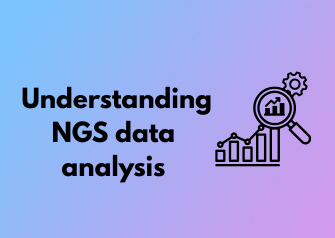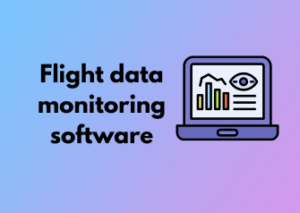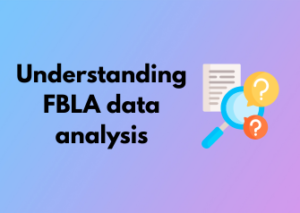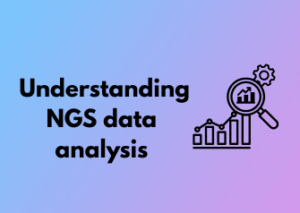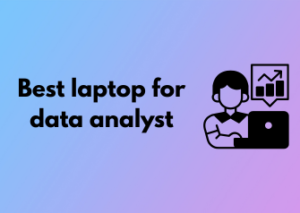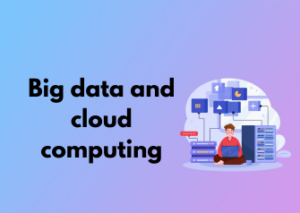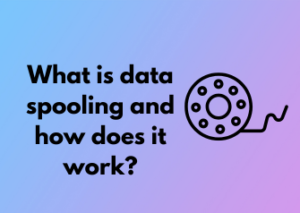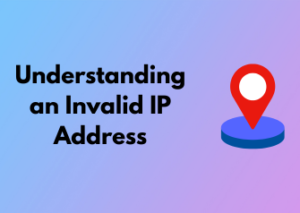Next-Generation Sequencing (NGS) data is at the forefront of modern biological research and has revolutionized the way we study DNA and RNA. But what exactly is it, and why should you care about it? Let’s dive into this exciting topic!
At its core, NGS data refers to the massive amounts of information generated from sequencing technologies capable of processing millions—or even billions—of DNA or RNA fragments in parallel. Unlike traditional sequencing methods, which are slower and more limited in scale, NGS empowers researchers to explore genetic information on an unprecedented level. The data generated not only provides the blueprint of life found in any organism’s genetic makeup but also reveals fascinating insights about mutations, gene expression, or even interactions between genes and environmental factors. In short, it opens doors to discoveries once thought impossible.
So, why does NGS data matter?
Here’s the thing: NGS is not just for a niche group of genome nerds (though, shoutout to them!). This data impacts real-world science and medicine in ways you probably engage with more than you think. Have you heard about advancements in cancer treatment, prenatal testing, or tracking global viral outbreaks? All of that relies on NGS technologies and the data they produce.
What makes this data truly invaluable is its breadth and depth. It enables:
- Precision medicine: Doctors can now tailor treatments to a person’s unique genetic profile. For example, understanding how certain mutations influence drug response has improved outcomes for cancer patients.
- Understanding genetic disorders: NGS makes it faster and more affordable to identify mutations responsible for rare diseases, paving the way for better diagnostics and interventions.
- Evolutionary and environmental research: Scientists use NGS to decode how species adapt, evolve, and interact with their ecosystem, enriching our understanding of life itself.
But it’s not just about “big science.”
NGS data is also making its mark in applied fields like agriculture and biotechnology. Farmers and scientists, for instance, can identify drought-resistant genes in crops to enhance food security. In fact, the precision and richness of this data are rapidly becoming indispensable across diverse industries.
NGS democratizes data access
What’s even more exciting is that the cost of NGS has dropped significantly, making it accessible to smaller research teams and labs. In the past decade, a process that would have cost millions now costs just a fraction of that, meaning more people than ever before get to participate in groundbreaking research. And with cloud computing stepping in, even the computational challenges of handling these enormous datasets are becoming less daunting.
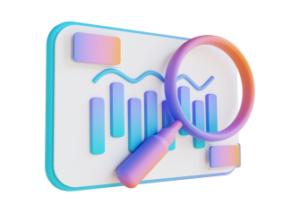
Key Steps in the NGS Analysis Workflow
Next-Generation Sequencing (NGS) opens a universe of possibilities for understanding genetic and genomic data. But let’s be real—diving into the analysis can feel daunting without a clear roadmap. That’s why having a well-defined NGS analysis workflow is essential. It keeps you on track, ensures high data quality, and ultimately helps you uncover meaningful results. Let’s walk through the key steps in this workflow together, breaking it down in a way that makes sense and keeps it approachable.
1. Experimental Design: Start Smart
Before anything else, pause and plan. What’s the purpose of your research? Which question are you aiming to answer? Designing your experiment correctly up front ensures you get the data you need without wasted resources. Think about aspects like sample size, sequencing depth, and whether you’re conducting RNA-Seq, whole-genome sequencing, or targeted sequencing.
Pro tip: Collaborate with a bioinformatician early in your design stage! They can help you avoid common pitfalls and align your sequencing strategy with the downstream analysis requirements.
2. Sequence Data Generation
Once the samples are ready to go, they head to the sequencing machine (think Illumina, PacBio, or Oxford Nanopore). This step is all about generating the raw dataset, which will be the backbone of everything that follows. It’s critical to check the sequencing output for completeness and basic quality before diving deeper into analysis.
If you’re new to this, remember that raw reads may not look pretty—they’re like unpolished gems that need a little TLC (tender, loving care) in the next steps.
3. Preprocessing: Cleaning up Your Data
Raw sequencing data is messy—it can include missing base calls, adapter sequences, and low-quality reads. This is where preprocessing comes into play:
- Quality Control: Use tools like FastQC to evaluate the health of your data. For any flagged issues, take appropriate corrective steps.
- Trimming: Remove adapters and other unwanted elements using tools like Trimmomatic or Cutadapt. Clean data is happy data!
- Filtering: Discard low-quality reads to ensure only the most reliable data moves forward.
Think of this stage as tidying up a cluttered room—you’ll thank yourself later when the analysis is smoother.
4. Read Alignment or Assembly
This is where your data starts to find its place in the big picture. Depending on your goals, you’ll either map reads to a reference genome or assemble them de novo:
- Alignment: Tools like BWA or Bowtie2 help map your reads to a known reference genome. This is crucial for pinpointing mutations, structural variations, or expression levels.
- Assembly: When no reference genome exists, use tools like SPAdes or Velvet to construct one from scratch.
Fun analogy: Think of alignment as jigsaw-puzzling your data into a predefined picture, while assembly is more like painting that picture from scratch!
5. Variant Calling or Quantification
Now we’re stepping into the exciting territory—the heart of what you’re trying to uncover! At this stage, you identify key elements like:
- SNPs and Indels: Use variant calling tools like GATK or FreeBayes to detect variations that may be relevant for your analysis.
- Gene Expression Levels: For RNA-Seq, tools like HTSeq or featureCounts help quantify which genes are active and at what levels.
This step often feels like bringing your data to life, as you start seeing real genomic insights emerge.
6. Visualization and Interpretation
We’re almost at the finish line! Visualization makes your data digestible, allowing you to communicate findings effectively. Tools like IGV for genome browsing or R packages like ggplot2 for custom plots can transform raw results into meaningful stories.
At this stage, interpret your results carefully. The breakthrough insights you extract rely on both the power of the tools and your own intellectual rigor.
7. Validation and Reporting
Finally, validate your findings (this step is non-negotiable). It’s vital to confirm that your key results aren’t false positives or artifacts of the process. After that, prepare your findings for publication or sharing with stakeholders.
And don’t forget to document your workflow! Well-annotated pipelines and transparent reporting are critical for reproducibility in research.
Essential Tools for Accurate Data Interpretation
When it comes to analyzing Next-Generation Sequencing (NGS) data, having the right set of tools can make a world of difference. NGS generates massive amounts of data, and ensuring you extract every bit of meaningful information efficiently and accurately is key. Let’s dive into some of the must-have tools and technologies for precise NGS data interpretation—and how to pick the best ones for your journey.
Why Are Tools So Important?
NGS data isn’t just ‘data.’ It’s a complex blend of sequences, signals, and patterns that hold the secrets of genetic information. Correct interpretation requires computational horsepower, robust algorithms, and carefully tailored software. Without the right tools, it’s easy to miss crucial insights or, even worse, misinterpret genomic variants that could lead to incorrect conclusions. Good tools reduce errors, streamline workflows, and help you focus on the biological questions driving your research.
Categories of Essential NGS Tools
NGS analysis tools typically fall into specific categories, each handling a particular step of interpretation. Let’s break these down for clarity:
- Alignment Tools: These tools align raw sequencing reads to a reference genome to determine where the sequences fit and uncover variations. Popular options include BWA, Bowtie2, and STAR (especially for RNA-seq).
- Variant Calling Tools: Once aligned, variant callers identify differences, such as SNPs and indels. Dependable programs like GATK, FreeBayes, or VarScan are commonly used.
- Annotation Tools: These enrich your data by adding biological meaning to variants. For example, ANNOVAR or SnpEff can connect variants to genes, pathways, and phenotypes.
- Data Visualization Tools: Turning complex data into graphs, heatmaps, or plots helps communicate findings. Tools like IGV (Integrative Genomics Viewer) or UCSD Genome Browser are your best friends here.
Consider Usability and Scalability
One thing to keep in mind is that no tool is one-size-fits-all. Each project has unique requirements. Before choosing a tool, ask yourself these questions:
- Is the tool user-friendly? It’s great to have a tool with all the bells and whistles, but if you can’t figure out how to use it, it’s of no help. Tools with detailed documentation, tutorials, and active user communities are a plus.
- Does it handle large datasets? NGS often involves terrabytes of data. Ensure your tool or pipeline can scale with growing data sizes without compromising performance.
- Is it customizable? Different projects have different goals. Open-source tools or tools with adjustable parameters allow for greater flexibility in analysis.
Trust the Ecosystem
No tool works alone. A well-designed pipeline that integrates multiple tools often provides the best results. For instance, a typical workflow might use BWA for alignment, GATK for variant calling, and SnpEff for annotation, with downstream visualization in IGV. Many tools are designed to complement each other, so pick ones compatible with your preferred pipeline structure.
Understanding Quality Control in NGS Data
Quality control (QC) is an absolutely critical step in the analysis of Next-Generation Sequencing (NGS) data. Think of it as the process of ensuring that the “ingredients” in your sequencing recipe are fresh and suitable for the “dish” you hope to prepare—high-quality data is essential for reliable downstream analysis. With so many steps in NGS, from sample preparation to sequencing and interpretation, things can (and do) go wrong. But don’t worry! Let’s walk through why QC matters and how to do it right.
Why is QC so Important?
Imagine spending weeks, even months, on an experiment, only to realize that your final results are meaningless because of undetected errors early in the process. This is why QC exists—it’s your safety net! By checking the quality of your raw data early on, you can identify problems like low read quality, contamination, or duplicate sequences before diving into analysis. Without this step, your conclusions could be based on flawed data, which is the scientific equivalent of building a house on quicksand.
Steps to Effective Quality Control
QC isn’t as daunting as it might sound—it’s all about systematically examining your data for potential issues. Here’s a quick look at the key steps:
- Assess Raw Reads: The first step is to check the quality of your raw sequencing reads. Are there issues with base call quality, GC content, or adapter contamination? Software like FastQC is a lifesaver here, providing easy-to-interpret summary reports.
- Trim and Filter: Once you’ve identified low-quality bases or adapter sequences at the beginning or end of your reads, it’s time for some cleanup. Tools like Trimmomatic or Cutadapt are great for trimming away unwanted bases and filtering out low-quality reads altogether.
- Evaluate Depth and Coverage: QC doesn’t end with raw reads. It’s important to ensure you’ve sequenced deeply enough to reliably detect the features of interest. Coverage analysis tools like Bedtools can help evaluate whether your target regions have adequate representation.
Common QC Metrics to Watch
Let’s break down some common metrics you’ll encounter while performing QC. Don’t worry, these are easy to wrap your head around:
- Per Base Quality Scores: This measures the reliability of base calls across your reads. Ideally, these scores should be consistently high across most of your data.
- GC Content: Anomalies in GC content can indicate contamination or library preparation issues.
- Adapter Content: If remnants of adapter sequences remain in your reads, filtering them out is a must for clean results.
Golden Rules for QC Success
To ensure your QC efforts lead to high-quality data, keep the following tips in mind:
- Start Strong: Use high-quality input material and ensure your library preparation steps are precise and consistent.
- Don’t Skip Steps: Resist the urge to rush through QC because you’re eager to get to the analysis stage. QC issues caught early save you headaches later.
- Document Everything: Keep clear records of the tools, versions, and parameters you use during QC. This is invaluable for reproducibility and troubleshooting.
Applications of NGS Across Different Fields
Next-generation sequencing (NGS) is a technological marvel that has contributed immensely to shaping the way we understand and interact with complex data in science, medicine, and beyond. The versatility of NGS has made it a cornerstone in many areas, sparking innovations and transforming entire fields. Curious about how NGS touches different industries? Let’s dive into this exciting realm!
1. Revolutionizing Healthcare and Medicine
Without question, one of the most impactful areas for NGS is healthcare. NGS is creating groundbreaking opportunities for personalized medicine, where treatments can be tailored to individual genetic profiles. For instance:
- Cancer genomics: NGS enables researchers and clinicians to identify mutations in cancer-related genes, allowing for the development of targeted therapies and improved patient outcomes.
- Infectious disease diagnosis: From tracking viral mutations (think COVID-19!) to identifying antibiotic resistance, NGS gives us the tools to stay one step ahead of pathogens.
- Prenatal testing: Through non-invasive prenatal testing (NIPT), NGS can detect chromosomal anomalies early in pregnancy, supporting better decision-making for parents-to-be.
Simply put, NGS is revolutionizing the way doctors and scientists approach health and disease, making it a game changer.
2. Broadening Horizons in Agriculture
Did you know that NGS is also helping to feed the world? In the agricultural sector, this technology has paved the way for healthier crops, improved livestock breeding practices, and enhanced food security. Here’s how:
- Crop improvement: NGS allows researchers to study plant genomes, pinpoint genes responsible for drought resistance or higher yields, and develop crops that thrive in challenging environments.
- Livestock genetics: Farmers can use NGS to identify traits linked to disease resistance or better meat quality, streamlining breeding programs and improving sustainability.
- Food safety: By monitoring and identifying pathogens in the food supply chain, NGS plays a vital role in maintaining public health standards.
This application ensures more resilient food systems and contributes to global efforts against hunger and malnutrition.
3. Deepening Insights in Environmental Science
The natural world is teeming with biodiversity—and NGS helps us uncover its secrets. Environmental scientists are using NGS to study ecosystems, from the deepest oceans to the densest forests. Key applications include:
- Microbial diversity study: NGS can identify and analyze microbes in water, soil, or air samples, providing critical insights into ecological health.
- Climate research: Sequencing can track the effects of climate change on various species, shedding light on adaptation and migration patterns.
- Conservation biology: By analyzing the DNA of endangered species, we can guide conservation strategies more effectively.
From protecting biodiversity to tackling pollution, NGS equips scientists with the knowledge they need to combat environmental challenges.
4. Advancing Forensic Science
Forensics has leaped forward thanks to NGS. Crime scene investigations can now harness the power of sequencing to analyze trace amounts of DNA, even from mixed or degraded samples. This allows experts to:
- Identify suspects: Sequence data provides highly specific genetic fingerprints, increasing the accuracy of identification.
- Assist legal cases: NGS analysis strengthens evidence in court by offering undeniable genetic proof.
- Unravel ancestry: In cases of unknown origins, sequencing can shed light on familial or ancestral connections.
The precision of NGS has heightened the credibility of forensic evidence and brought justice to light in countless cases.
Addressing Common Challenges in Data Processing
Next-Generation Sequencing (NGS) is an incredible technology, but let’s be real: the data processing stage can be a bit of a headache sometimes. Whether you’re a seasoned bioinformatician or a curious newcomer, it’s likely you’ve encountered your fair share of roadblocks during data analysis. Don’t worry, though — you’re not alone! Below, we’ll chat about the most common challenges in processing NGS data and how you can confront them like a pro.
Challenge #1: Data Overload – When Bigger Isn’t Always Better
NGS excels at generating massive datasets, but this can quickly turn into a storage and computational nightmare. Processing hundreds of gigabytes (or even terabytes!) of raw data can feel overwhelming.
The fix? Plan ahead. Invest in a robust computational infrastructure or leverage cloud-based solutions like AWS or Google Cloud, which offer scalable resources without the need for hefty hardware purchases. Compress your data with efficient file formats like .bam or .cram to reduce storage demands.
Challenge #2: Managing Noisy Data
Not all data generated by NGS is clean and perfect. Instrument errors, contamination, or even PCR bias can lead to low-quality reads that can skew your analysis.
Solution breakdown:
- Perform a thorough quality check: Use tools like FastQC to evaluate read quality. These programs flag common issues like low Phred scores and adapter contamination.
- Trim and filter your reads: Tools such as Trimmomatic or Cutadapt can remove low-quality bases and adaptors, leaving you with cleaner data ready for further analysis.
- Opt for strict quality thresholds: While you might want to keep as much data as possible, it’s better to be strict with your filtering criteria to avoid downstream inaccuracies.
Challenge #3: Proper Read Alignment
Mapping reads to a reference genome is one of the most critical steps in data processing, but it’s also rife with pitfalls. Poor alignment can lead to false positives or missed variants.
What to do:
- Choose reliable alignment tools like BWA, Bowtie2, or HISAT2, which are known for their accuracy and performance.
- Optimize parameters based on your dataset (e.g., longer reads versus shorter reads).
- Confirm alignment accuracy by evaluating metrics such as mapping quality scores and alignment coverage across the genome.
Challenge #4: Dealing with Variant Calling Errors
Variant calling — identifying mutations, SNPs, or structural variants — is an essential step in processing NGS data. However, differentiating true variants from sequencing artifacts can be tricky.
Your toolkit to tackle this:
- Use reputable variant callers: Programs like GATK, FreeBayes, or VarScan are widely trusted in the field.
- Employ filters strategically: Applying filters based on criteria like coverage depth or variant quality scores can weed out false positives.
- Validate findings: Verify high-stakes variants through secondary methods, such as Sanger sequencing.
Challenge #5: Keeping Track of Metadata
With so much data coming in, maintaining organized records of sample names, conditions, and experiment details can be daunting.
Keep your metadata in check with these tips:
- Use standardized formats like the SAM/BAM specification, which include fields for essential metadata.
- Create descriptive and consistent naming conventions for files and folders — you’ll thank yourself later!
- Consider using a laboratory information management system (LIMS) for larger projects.
Best Practices for Managing and Storing NGS Data
Next-generation sequencing (NGS) produces an incredible amount of data—a treasure trove for researchers science-wide. But as with any treasure, proper care and management of these data are crucial to preserving their value. Whether you’re a seasoned bioinformatics pro or new to the NGS world, organized data handling is critical not only for smooth project workflows but also for long-term reliability, ethics, and reproducibility.

Why Proper Management is More Than “Good Practice”
NGS datasets are often massive—ranging from gigabytes to terabytes depending on the scale of your research. Poor organization can lead to loss of critical information, inefficient processing, or even ethical concerns surrounding privacy if personal data is involved. Managing and storing your data correctly ensures:
- Data Integrity: Safeguarding against accidental corruption or loss.
- Future Reproducibility: A well-documented dataset is key when validating results or enabling others to replicate your analyses.
- Efficiency: Easy access to properly stored files speeds up workflows.
1. Develop a Clear Data Storage Strategy
Before generating a single read of NGS data, plan where your files will live. Typically, this involves a mix of local storage, institutional servers, or cloud storage solutions. Cloud platforms such as AWS, Google Cloud, or specialized options like DNAnexus and Illumina BaseSpace are scalable and secure for big data.
Ensure your strategy includes:
- Regular backups on multiple platforms (local and cloud).
- Encryption for sensitive datasets (e.g., human genomic data).
- Specific folder structures for raw files, intermediate files, and final outputs.
2. Use Standardized File Naming Conventions
Let’s face it—naming your file “sample1_NEW_v2_final_final_THISONE.bam” is not a winning strategy. A consistent, descriptive, and intuitive naming protocol reduces confusion and promotes collaboration across teams.
For example:
{ProjectName}_{SampleID}_{DataType}_{ProcessingStage}.{extension}This structure separates essential data points like sample IDs and file types (e.g., FASTQ, BAM, VCF), which helps with automation scripts or when sharing with collaborators. Trust us, your future self will thank you!
3. Metadata is Your Best Friend
NGS data isn’t just raw reads—it needs context. Metadata fills in the gaps by providing vital details about the data’s origin, processing steps, and attributes. Stick to industry standards like MIAME (Minimum Information About a Microarray Experiment) or precise README files. These ensure that future analyses are transparent and traceable.
4. Keep an Eye on Data Retention Policies
Storage space is precious—especially for NGS data. Implement data retention policies to prune non-critical files responsibly. For example:
- Archive raw FASTQ files after publication but keep processed VCF files accessible.
- Delete intermediate temporary files that you’ll no longer need.
Just always check institutional or funding agency guidelines before hitting delete!
5. Use Version Control for Data and Scripts
Ever modified a file and wished you hadn’t? Implementing version control saves the day. Versioning tools like Git can track script changes, while some NGS management tools inherently handle file versioning. Document each step thoroughly in “processing logs” for further traceability. Bonus: this will make you a peer-review superstar.
6. Backup. Then Backup Again.
You can never have too many backups. Regularly update your backup schedule and store copies in multiple locations—ideally at least one geographically different from your primary storage. Automation tools can reduce the human error factor here.
7. Keep Security and Permissions in Check
If your NGS data involves sensitive subjects (say, human genomes), security is non-negotiable. Employ tools that provide advanced encryption and enforce strict access controls. Periodically review who has access, and ensure they’re only seeing what they need for their role.

